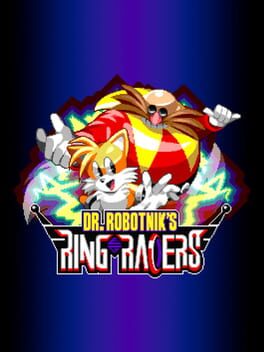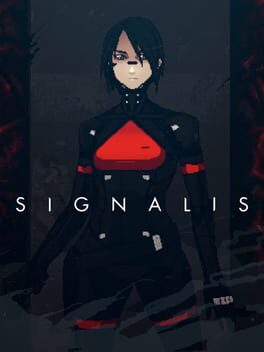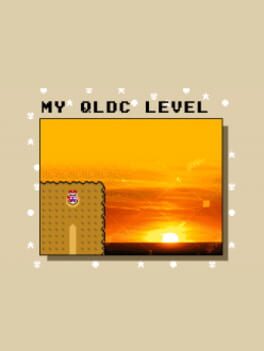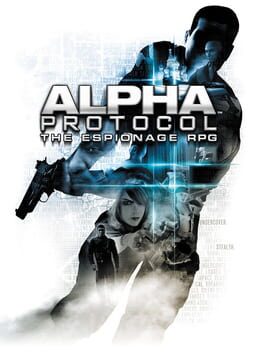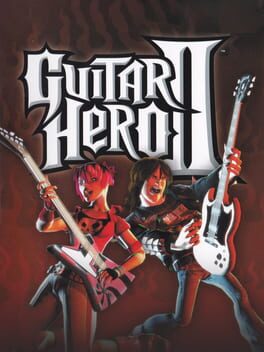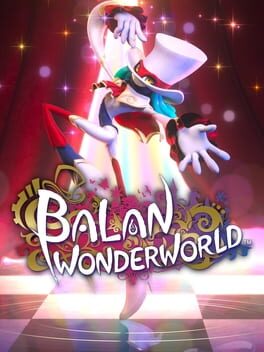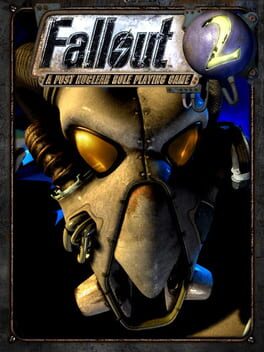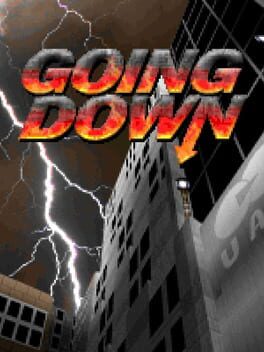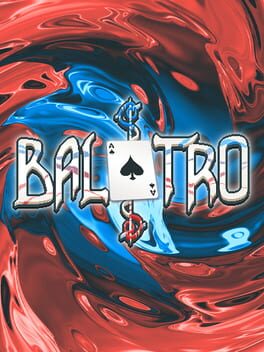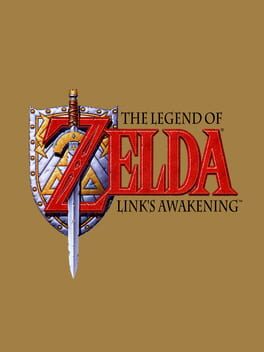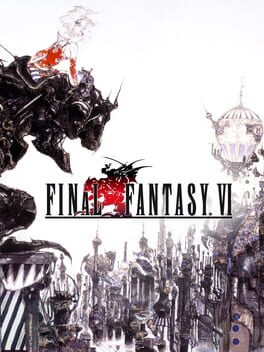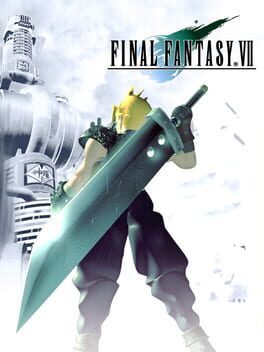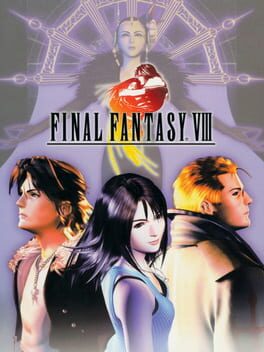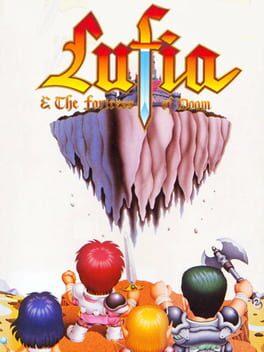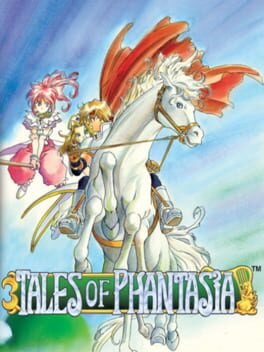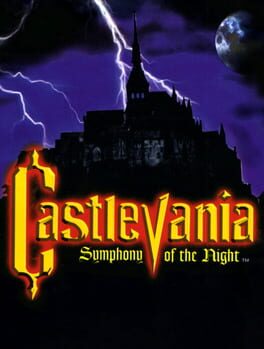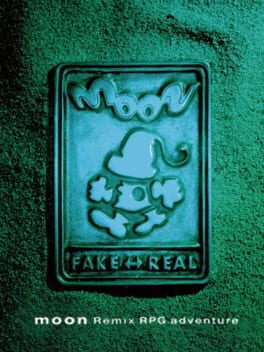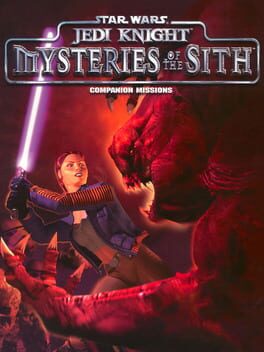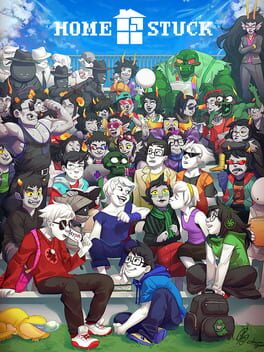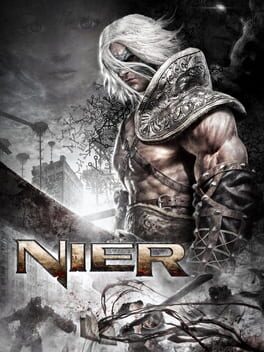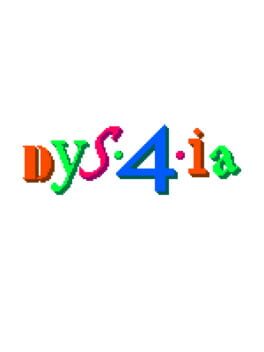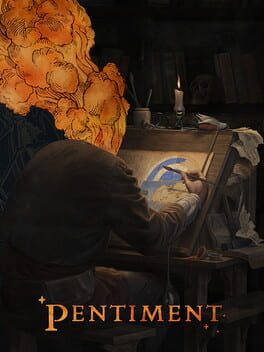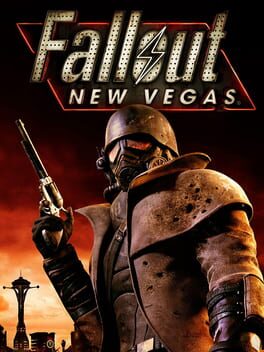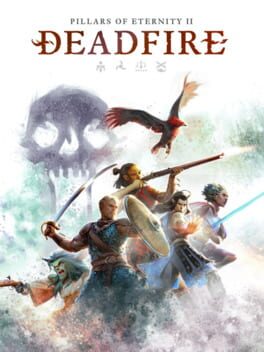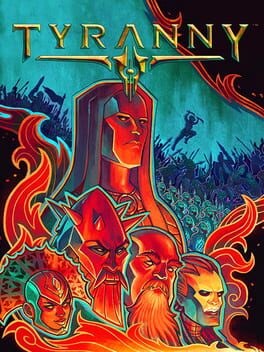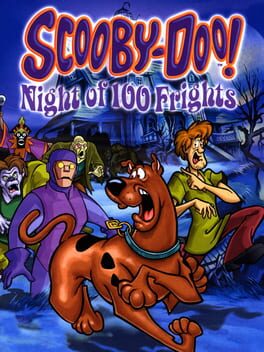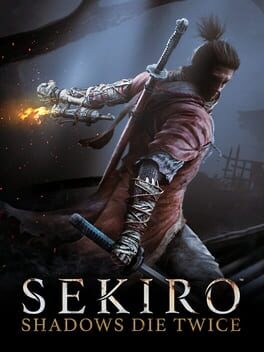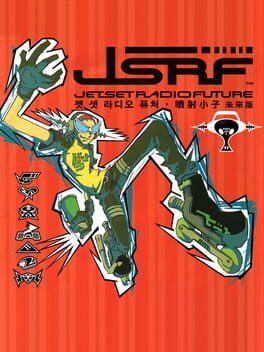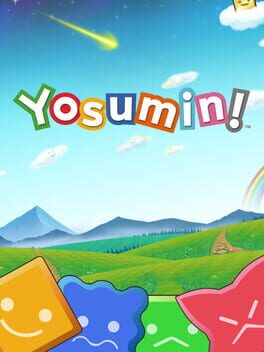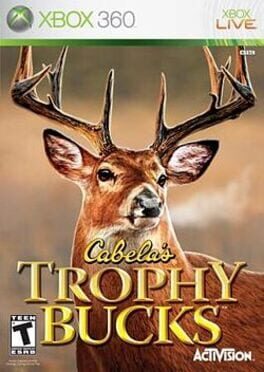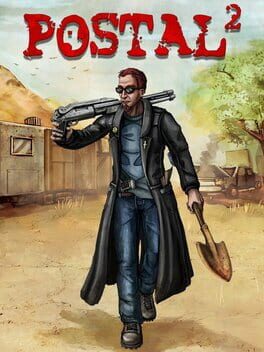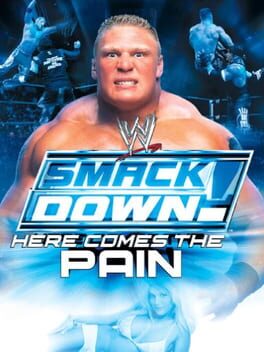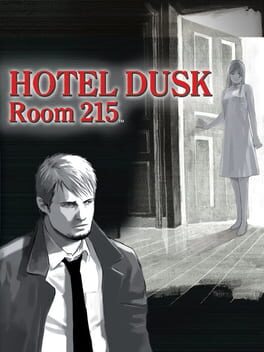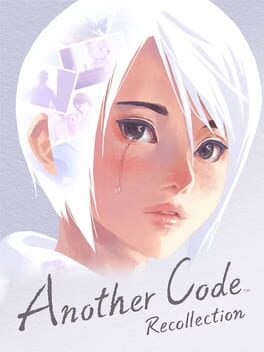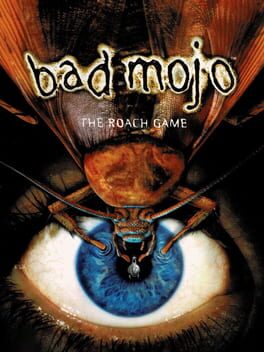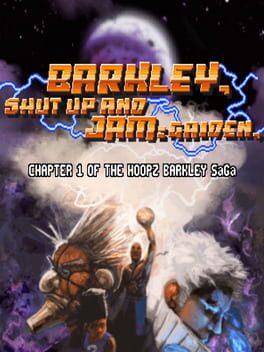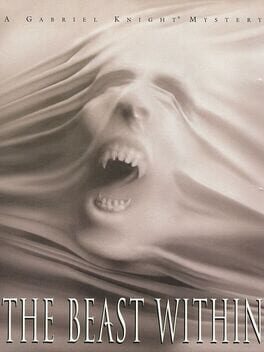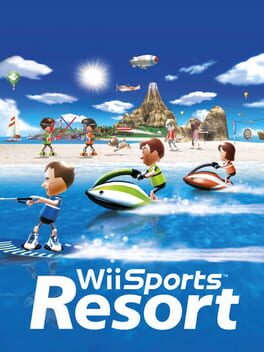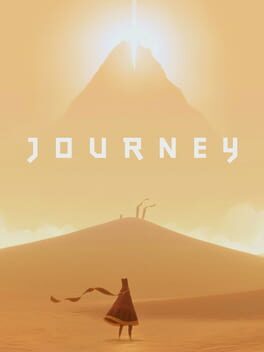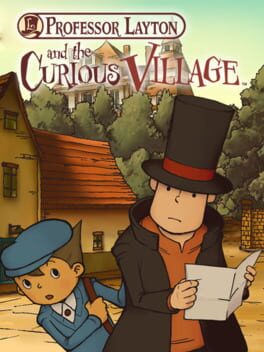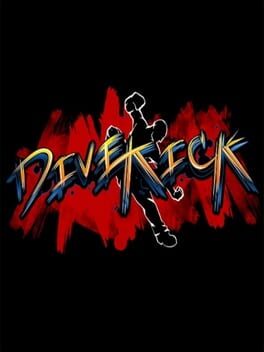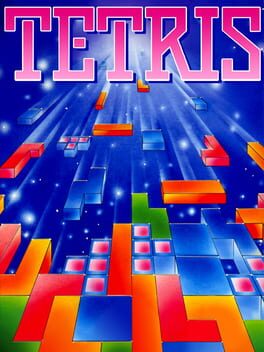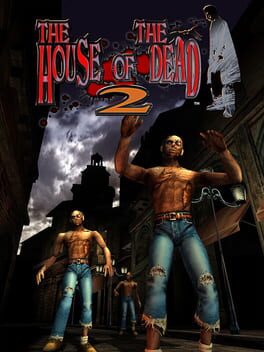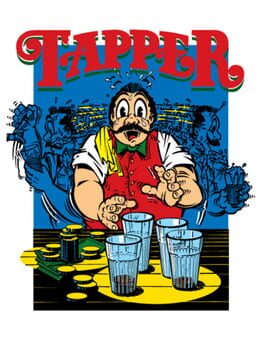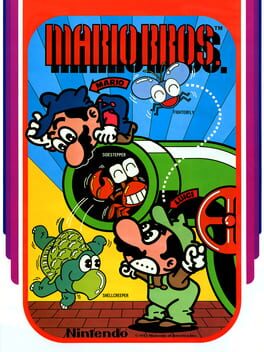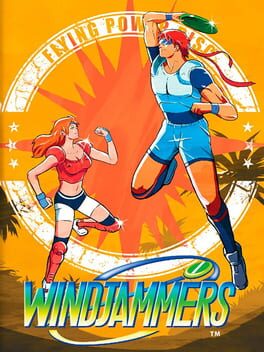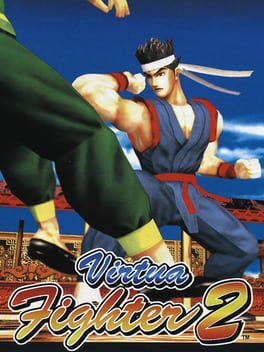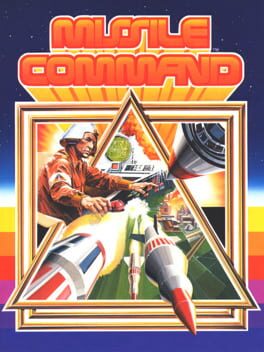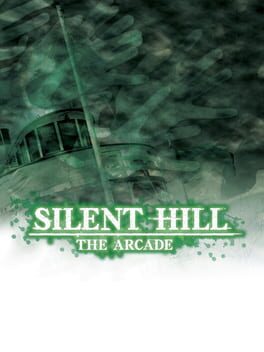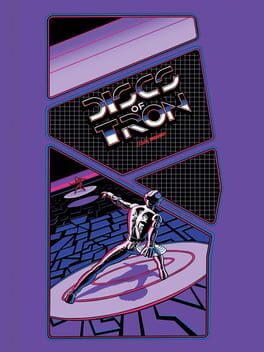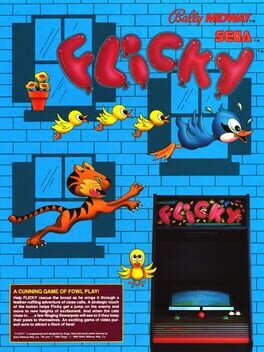Nowhere
435 reviews liked by Nowhere
This is a game where a bunch of talented developers were stuck in the same room for two years who were never told "no." Instead, they told each other "sure, bro."
Want to make a bunch of new mechanics that are both overcentralizing and near-irrelevant? Sure, bro.
Want to make a 30-60 minute long tutorial you can only skip by winning a race you only can win if you already know how to play the game somehow? Sure, bro.
(Don't even get me started on how the tutorial was before the first patch, the requirements to skip the tutorial were hidden AND you had to clear a max-level race. Actually evil.)
Want to generally nerf items while cranking the knockback to unfathomable degrees which creates scenarios where you can get knocked out of a top position and no item is reasonably strong enough to get you back where you were? Sure, bro.
Want to make items actively feel bad to get because the Ring system is so encouraged while also not letting you use Rings with an item in hand? Sure, bro.
Want to make like 200 tracks but they all have narrow tracks and very tight turns? Sure, bro. Also want to make any uphill slope kill your speed and make you have to STOP IN PLACE to Spin Dash upward VERY SLOWLY? Sure, bro.
Want to make a single player mode where the rubberbanding is overtuned (even after a near launch day nerf, mind you), the AIs will target you even when you're near dead-last, and the Rival explicitly cheats and will steal victories from you? Sure, bro.
Want to make an unlock system like Kirby Air Ride but make a bunch of requirements hard, cryptic, and/or straight up unrealistic to achieve unless you dedicate literal months of game time? Suuuuure, bro.
Despite its many, MANY problems, the game is still fun and I can see a version of this game where the new additions compliment base SRB2K rather than detract. The Rings being the omnipresent, overbearing problem is an issue I don't see being fixed, though. The devs seem really proud of their Ring system even if it kills the Kart aspect by making items less used/encouraged. I can always hope, though.
tl;dr Imagine if Mario Kart was mixed with F-Zero but all the worst parts of F-Zero were mixed in with a dash of unique jank and bad decisions. Enjoyable for kart-racer tryhards, completionists, and masochists, and nobody else.
Want to make a bunch of new mechanics that are both overcentralizing and near-irrelevant? Sure, bro.
Want to make a 30-60 minute long tutorial you can only skip by winning a race you only can win if you already know how to play the game somehow? Sure, bro.
(Don't even get me started on how the tutorial was before the first patch, the requirements to skip the tutorial were hidden AND you had to clear a max-level race. Actually evil.)
Want to generally nerf items while cranking the knockback to unfathomable degrees which creates scenarios where you can get knocked out of a top position and no item is reasonably strong enough to get you back where you were? Sure, bro.
Want to make items actively feel bad to get because the Ring system is so encouraged while also not letting you use Rings with an item in hand? Sure, bro.
Want to make like 200 tracks but they all have narrow tracks and very tight turns? Sure, bro. Also want to make any uphill slope kill your speed and make you have to STOP IN PLACE to Spin Dash upward VERY SLOWLY? Sure, bro.
Want to make a single player mode where the rubberbanding is overtuned (even after a near launch day nerf, mind you), the AIs will target you even when you're near dead-last, and the Rival explicitly cheats and will steal victories from you? Sure, bro.
Want to make an unlock system like Kirby Air Ride but make a bunch of requirements hard, cryptic, and/or straight up unrealistic to achieve unless you dedicate literal months of game time? Suuuuure, bro.
Despite its many, MANY problems, the game is still fun and I can see a version of this game where the new additions compliment base SRB2K rather than detract. The Rings being the omnipresent, overbearing problem is an issue I don't see being fixed, though. The devs seem really proud of their Ring system even if it kills the Kart aspect by making items less used/encouraged. I can always hope, though.
tl;dr Imagine if Mario Kart was mixed with F-Zero but all the worst parts of F-Zero were mixed in with a dash of unique jank and bad decisions. Enjoyable for kart-racer tryhards, completionists, and masochists, and nobody else.
Signalis
2022
My QLDC Level
2023
Please don't read what this actually is, just play it. It's short (20-30m?) and one of the coolest things I've ever seen come out of romhacking. Patch over at the author's profile on smwcentral.
CW: Low effort review.
The unassuming name wouldn't lead you to believe it won the Questionable Level Design Contest '23, but from the way things are phrased it, it's as if it were an easy pick! And it's not really hard to see why!
Spoilers below here.
How is this possible? LOL, absolutely genius concept, this is the kinda stuff I play video games for. How one came up with the idea of the entire game being just the map movement (with occasional bits of hybrid normal and map platforming) is beyond me; or at least I feel like it is. The individual texts for a lot of squares were humorous and some of the level design just a bit mean.
And yet, something about reaching the end of it, with the long walk and ever so faintly sarcastic text, still felt sincere. Like "yea, here's my thing." Awesome.
CW: Low effort review.
The unassuming name wouldn't lead you to believe it won the Questionable Level Design Contest '23, but from the way things are phrased it, it's as if it were an easy pick! And it's not really hard to see why!
Spoilers below here.
How is this possible? LOL, absolutely genius concept, this is the kinda stuff I play video games for. How one came up with the idea of the entire game being just the map movement (with occasional bits of hybrid normal and map platforming) is beyond me; or at least I feel like it is. The individual texts for a lot of squares were humorous and some of the level design just a bit mean.
And yet, something about reaching the end of it, with the long walk and ever so faintly sarcastic text, still felt sincere. Like "yea, here's my thing." Awesome.
Alpha Protocol
2010
Never thought I'd see the day where Alpha Protocol would escape rights hell and reemerge available to legally obtain once more. I already had an old Steam copy long before the delisting happened, but I was quick to double-dip on GOG to show my support once I heard the news and it also gave me a good reason to replay the game after my last one quite some time ago. AP still holds up for me as one of my favorite games, flaws and all, though said flaws definitely are rather over-exaggerated I feel; it really isn’t that especially janky or buggy when it comes to ambitious WRPGs.
When I first completed AP more than a decade ago I was a bit lukewarm on it, I enjoyed it enough but some of the fights frustrated me, having not fully understood how to best utilize the builds and how to break the combat. Replaying the game not long after transformed it into one of my favorite games, because through that replay I realized how genuinely reactive AP was and how unrivaled it was and still is in this regard, nearly fifteen years on. While Bioware at the time was touting how Mass Effect was going to take all your choices into account, which they would inevitably flounder on that promise in the end, Obsidian quietly fulfilled that promise in reactivity with AP. ME was obviously a much taller order, being a trilogy and all, but Obsidian did the smart thing of just having AP be a standalone game which allowed easier and greater reactivity; and boy does this game have layers. There's so much to uncover depending how much you explore and your relationships with the characters. Finding dossiers on characters and factions have real tangible effects on the game. This information could also lead to very different outcomes and even a unique mission or two. Alpha Protocol’s dialogue system is a more fleshed out expansion of Mass Effect’s Paragon/Renegade dialogue system with three personality styles based off popular spy characters; Professional (Jason Bourne, this one being the more heroic one on average, as much as a black ops fed agent can be anyway), Suave, (James Bond, though like the biggest dudebro version of Bond ever who has got all the smarm and verbal sexual harassment but none of the class) and Aggressive. (Jack Bauer, complete aggro asshole who shoots first and asks questions never) There is some more nuance to these personalities so they don’t always adhere to that mold strictly and characters respond differently to which approach you take with them and the game encourages a varied approach because of that. The dialogue system is also a precursor to the Telltale formula, as you are timed in your responses unlike in Bioware RPGs of the time. The dialogue system is the best part of the game mechanically, really mastering what Bioware was working on at the time. Being able to use information you gleaned from dossiers in dialogue is also real cool and characters will even compliment on how prepared you are.
The gameplay outside dialogue is kinda jank though, but honestly isn't notably so compared to other WRPGs of the era. Like the pre-EA buyout Bioware games of the 2000’s and Mass Effect 1 didn't have great combat either, for example. And if people can forgive the sheer mess of Vampire: The Masquerade Bloodlines (I'm among them) AP can be forgiven too. The biggest FYIs I'd give when it comes to the combat is that the game demands that you need to wait for the reticle of the guns to tighten up in order to consistently hit enemies and that stealth is primarily used as a combat option, a very good one as you level it up more, but not as a means to ghost through the game. You can avoid combat with stealth but the game still throws a bunch of fights at you that you can't avoid, namely the boss fights. Stealth in AP is more meant to be used to become an invisible punch-ghost who throat chops everyone in the room. Combat can be rather fun though, mainly in that most of the stat branches are busted once you start getting midway through the tree. Pistols are the biggest example as Chain Shot is an amazing ability that practically deletes every boss in the game with just the second upgrade of it. Martial Arts is also a fun ability as you can give enemies a flying knee to the face to knock them on their ass and finish them off with a stomp. Also you should put like two points into Sabotage so it makes the hacking mini-games easier or you can just bypass them with EMPs, they get rather rough as the game goes on, though hitting alarms isn’t that big of a deal as the only penalty is that enemies in the area are alerted to you, its not like MGS where they can spawn in.
Narratively, I do think the game is quite good with more depth than you would initially think. AP's tone is actually kind of all over the place, but I think it still works despite any hiccups; it actually ends up being this odd combination of genuine spy thriller that dabbles in some rather bold political themes for a mainstream video game, mainly it how the game has such as an utterly dim view of American empire and the military industrial complex, but it’s also essentially an almost parodic pastiche of the genre, letting you be a big juvenile power fantasy fairly straight most of the time where you can bang most of the female cast while making snarky one-liners and fight a Russian mobster and full time Tony Montana cosplayer who gets superpowers from snorting coke. The game can be quite funny too, manly with how Thorton is just such a big asshole; though it definitely falls into some cringe outdated 2000’s jokes at times, mainly when it comes to Suave Thorton being a creep. When it comes to the serious themes, in contrast, one example is how the Islamic terrorist leader set up as the initial antagonist is actually a man who honors his word; he has a whole bunch of innocent blood on his hands but he's still a lesser evil compared to, as well as being a mere pawn to, the grand web of global capital and American empire. American intelligence, the so called "good guys" are actually a den of sociopaths who number crunch death tolls to determine acceptable losses for American interests, dipshit nepo babies, and patriotic dupes unwittingly giving their service to a military industrial machine that will easy discard them without a second thought. The corporations are the actual masters of the American state and they use global politics as their playground just to make Number go up. Even though I really wouldn't call the game leftist, that's more for the Obsidian games Josh Sawyer directed, the game still has a rather keen awareness of American imperial megalomania for a 2010 video game and one of my favorite examples of this is a dossier that reveals that one of the previous names for Alpha Protocol was Deus Vult.
When it comes to the cast I think AP’s is neat. They aren’t as fleshed out as say, the Mass Effect crew, and they can be rather standard spy story clichés like SIE for example, who’s the big German femme fatale who likes violence and Thorton being aggro with her, but there’s always usually something more about them beneath the surface that you can uncover and figuring out what response they’d approve of is fun. You can also totally just piss them off too and the game even rewards you for it just like it would if they liked you. One of my favorites among the cast is Conrad Marburg, who I think is one of the best video game antagonists because he is still the only video game villain who actually takes into account how you've played the game up until the point you first meet him and he will know if you’re just trying to manipulate him by getting under his skin. Speaking of villains, AP also has my favorite evil ending in a game because you can just win over all the people working under the main villain and just take his place, to do so requires some thought and not going the standard stupid evil path of just killing everyone, though you can actually kill pretty much the entirety of the named cast if you want! That’s why this game’s the GOAT, it is truly is one of the most reactive games I have ever played.
In conclusion if you have any interest in game reactivity and player choice and don’t mind a bit of WRPG jank I really do recommend playing AP as it is still one of the shining stars, even over a decade later. It sucks we never got a sequel or spiritual successor that ironed out the game’s flaws but I’m just real glad people can experience this game again because it still holds up.
When I first completed AP more than a decade ago I was a bit lukewarm on it, I enjoyed it enough but some of the fights frustrated me, having not fully understood how to best utilize the builds and how to break the combat. Replaying the game not long after transformed it into one of my favorite games, because through that replay I realized how genuinely reactive AP was and how unrivaled it was and still is in this regard, nearly fifteen years on. While Bioware at the time was touting how Mass Effect was going to take all your choices into account, which they would inevitably flounder on that promise in the end, Obsidian quietly fulfilled that promise in reactivity with AP. ME was obviously a much taller order, being a trilogy and all, but Obsidian did the smart thing of just having AP be a standalone game which allowed easier and greater reactivity; and boy does this game have layers. There's so much to uncover depending how much you explore and your relationships with the characters. Finding dossiers on characters and factions have real tangible effects on the game. This information could also lead to very different outcomes and even a unique mission or two. Alpha Protocol’s dialogue system is a more fleshed out expansion of Mass Effect’s Paragon/Renegade dialogue system with three personality styles based off popular spy characters; Professional (Jason Bourne, this one being the more heroic one on average, as much as a black ops fed agent can be anyway), Suave, (James Bond, though like the biggest dudebro version of Bond ever who has got all the smarm and verbal sexual harassment but none of the class) and Aggressive. (Jack Bauer, complete aggro asshole who shoots first and asks questions never) There is some more nuance to these personalities so they don’t always adhere to that mold strictly and characters respond differently to which approach you take with them and the game encourages a varied approach because of that. The dialogue system is also a precursor to the Telltale formula, as you are timed in your responses unlike in Bioware RPGs of the time. The dialogue system is the best part of the game mechanically, really mastering what Bioware was working on at the time. Being able to use information you gleaned from dossiers in dialogue is also real cool and characters will even compliment on how prepared you are.
The gameplay outside dialogue is kinda jank though, but honestly isn't notably so compared to other WRPGs of the era. Like the pre-EA buyout Bioware games of the 2000’s and Mass Effect 1 didn't have great combat either, for example. And if people can forgive the sheer mess of Vampire: The Masquerade Bloodlines (I'm among them) AP can be forgiven too. The biggest FYIs I'd give when it comes to the combat is that the game demands that you need to wait for the reticle of the guns to tighten up in order to consistently hit enemies and that stealth is primarily used as a combat option, a very good one as you level it up more, but not as a means to ghost through the game. You can avoid combat with stealth but the game still throws a bunch of fights at you that you can't avoid, namely the boss fights. Stealth in AP is more meant to be used to become an invisible punch-ghost who throat chops everyone in the room. Combat can be rather fun though, mainly in that most of the stat branches are busted once you start getting midway through the tree. Pistols are the biggest example as Chain Shot is an amazing ability that practically deletes every boss in the game with just the second upgrade of it. Martial Arts is also a fun ability as you can give enemies a flying knee to the face to knock them on their ass and finish them off with a stomp. Also you should put like two points into Sabotage so it makes the hacking mini-games easier or you can just bypass them with EMPs, they get rather rough as the game goes on, though hitting alarms isn’t that big of a deal as the only penalty is that enemies in the area are alerted to you, its not like MGS where they can spawn in.
Narratively, I do think the game is quite good with more depth than you would initially think. AP's tone is actually kind of all over the place, but I think it still works despite any hiccups; it actually ends up being this odd combination of genuine spy thriller that dabbles in some rather bold political themes for a mainstream video game, mainly it how the game has such as an utterly dim view of American empire and the military industrial complex, but it’s also essentially an almost parodic pastiche of the genre, letting you be a big juvenile power fantasy fairly straight most of the time where you can bang most of the female cast while making snarky one-liners and fight a Russian mobster and full time Tony Montana cosplayer who gets superpowers from snorting coke. The game can be quite funny too, manly with how Thorton is just such a big asshole; though it definitely falls into some cringe outdated 2000’s jokes at times, mainly when it comes to Suave Thorton being a creep. When it comes to the serious themes, in contrast, one example is how the Islamic terrorist leader set up as the initial antagonist is actually a man who honors his word; he has a whole bunch of innocent blood on his hands but he's still a lesser evil compared to, as well as being a mere pawn to, the grand web of global capital and American empire. American intelligence, the so called "good guys" are actually a den of sociopaths who number crunch death tolls to determine acceptable losses for American interests, dipshit nepo babies, and patriotic dupes unwittingly giving their service to a military industrial machine that will easy discard them without a second thought. The corporations are the actual masters of the American state and they use global politics as their playground just to make Number go up. Even though I really wouldn't call the game leftist, that's more for the Obsidian games Josh Sawyer directed, the game still has a rather keen awareness of American imperial megalomania for a 2010 video game and one of my favorite examples of this is a dossier that reveals that one of the previous names for Alpha Protocol was Deus Vult.
When it comes to the cast I think AP’s is neat. They aren’t as fleshed out as say, the Mass Effect crew, and they can be rather standard spy story clichés like SIE for example, who’s the big German femme fatale who likes violence and Thorton being aggro with her, but there’s always usually something more about them beneath the surface that you can uncover and figuring out what response they’d approve of is fun. You can also totally just piss them off too and the game even rewards you for it just like it would if they liked you. One of my favorites among the cast is Conrad Marburg, who I think is one of the best video game antagonists because he is still the only video game villain who actually takes into account how you've played the game up until the point you first meet him and he will know if you’re just trying to manipulate him by getting under his skin. Speaking of villains, AP also has my favorite evil ending in a game because you can just win over all the people working under the main villain and just take his place, to do so requires some thought and not going the standard stupid evil path of just killing everyone, though you can actually kill pretty much the entirety of the named cast if you want! That’s why this game’s the GOAT, it is truly is one of the most reactive games I have ever played.
In conclusion if you have any interest in game reactivity and player choice and don’t mind a bit of WRPG jank I really do recommend playing AP as it is still one of the shining stars, even over a decade later. It sucks we never got a sequel or spiritual successor that ironed out the game’s flaws but I’m just real glad people can experience this game again because it still holds up.
Guitar Hero II
2006
Estimated read time: 6~ minutes.
I have terrible rhythm—I can synchronize, but that's about it—but I love this game. I practically can't beat Rhythm Heaven (might dive into that at some point), but I adore these tours and subpar live recording album-tier covers with completely nonsense maps that make the guitar play the piano, horns, etc.; not because it makes sense but because it's simply fun.
The intro goes incredibly hard. I think it perfectly represents the series as a whole. Even though Guitar Hero III is widely considered the best by a decent margin, I’m partial to II for its crust. Although one very nice feature starting here was they realized people were buying various types of RPTVs and plasmas, so they implemented a calibration screen to make the game playable in the new era of TVs with high latency (40+ms!!).
I’ve always had stage fright, particularly if it ever involved singing. Despite that, I walk through those venue doors, nervous and frankly embarrassed; social anxiety is a bitch. But my love was secretly listening to hard rock, metal, prog rock and metal, maybe a bit of trance here ‘n’ there. I Am here to enjoy some fucking music, meet fellow musicians, and hopefully grow as one.
You know what I found, though?
The fakest fuckers on the planet lamenting about not being popular enough or whatever. "What about me?" What about you? Another cold burnout song about how much everyone else sucks? Wow, how revelatory, you really shook up the scene today. I'm sure we'll quake in our boots at the idea of your sniggering, side-eyeing, nonchalant disregard and elitism leaving the venue and being laid to rest. I just want to play Guitar Hero for God’s sake!
Do you even understand fun? Talking about playing for the music, the esoterica and innate joy of it all, but it sure doesn't seem like it, not unless it's doing literally the same thing you decry the rest of the bands of doing: low effort punk rock with a bit of crass lyrics in there poisoned with irony, but then you make it worse by painting it with the veneer of artistic understanding and passion. Where is it? You seem content to hide it all up in a little heart-shaped box you’ve deemed only your little act worthy of being privy to.
Also, did you really have to do all that at karaoke night? Unplugging the amp and making a speech about it? Telling people they just don't get it and aren't singing for the right reasons? That punk night is dead! Do you even hear yourself? It's just some karaoke; get over yourself.
Go do your own tour or whatever; literally nobody asked you to leave, but I bet you’ll pretend you were kicked to the curb anyways. Showered in praise, yet you hyper-fixate on a couple of dissenters that pop up throughout the year? Who cares! The next set’s about to be played!
You were never here for the music, and it's no wonder you're completely and utterly obsessed with eras you were barely sentient for, or worse, not even around for. You can't get over the fact that time marches forward without you, someone new showing up one day and curb stomping you at your own act; it's humbling, but rather than take it on stride, you grimace, forcing a pained smile as you pat them on the back for performing so well. But it's clear that this was a massive blow to your ego. Maybe you can convince yourself it doesn't hurt so much if you only care about your fellow burnouts quitting emo and declaring the rest of the venue a madhouse.
It hurts, because I thought your act was pretty cool. I guess it’s pretty “punk rock” to jeer and give the cold shoulder though, right? Maybe it’s in spirit, maybe it’s hypocritical of me, whatever.
Throughout my musical journey it’s been nothing but revitalizing, igniting the flame once more for the medium I held so dear. I was berated and constantly mocked for my love of music, especially metal, combined with curve balls left and right, losing loved ones (or what few I would call those), I became very disillusioned with how people behave. It was branching out and stepping out of my comfort zone, keeping my chin up even in the face of pretentious acts that my love for music only grew more. Yeah, it sucked that some of my favorite bands became increasingly misanthropic, but why should that stop me? Why should it stop any of us? It was never about those assholes; it was about the music- their words, not mine. Well, their words until it was just about themselves. I’ll stop now, I’ve got a set to play whether or not people show up. It’ll probably be mediocre! I don’t care.
Punk rock never died. Don’t let the door hit you on the way out.
Goodnight.
Favorite track: The Sword - Freya
Unrelated music highlight: The Mothers of Invention (Live in London, ‘68)
I have terrible rhythm—I can synchronize, but that's about it—but I love this game. I practically can't beat Rhythm Heaven (might dive into that at some point), but I adore these tours and subpar live recording album-tier covers with completely nonsense maps that make the guitar play the piano, horns, etc.; not because it makes sense but because it's simply fun.
The intro goes incredibly hard. I think it perfectly represents the series as a whole. Even though Guitar Hero III is widely considered the best by a decent margin, I’m partial to II for its crust. Although one very nice feature starting here was they realized people were buying various types of RPTVs and plasmas, so they implemented a calibration screen to make the game playable in the new era of TVs with high latency (40+ms!!).
I’ve always had stage fright, particularly if it ever involved singing. Despite that, I walk through those venue doors, nervous and frankly embarrassed; social anxiety is a bitch. But my love was secretly listening to hard rock, metal, prog rock and metal, maybe a bit of trance here ‘n’ there. I Am here to enjoy some fucking music, meet fellow musicians, and hopefully grow as one.
You know what I found, though?
The fakest fuckers on the planet lamenting about not being popular enough or whatever. "What about me?" What about you? Another cold burnout song about how much everyone else sucks? Wow, how revelatory, you really shook up the scene today. I'm sure we'll quake in our boots at the idea of your sniggering, side-eyeing, nonchalant disregard and elitism leaving the venue and being laid to rest. I just want to play Guitar Hero for God’s sake!
Do you even understand fun? Talking about playing for the music, the esoterica and innate joy of it all, but it sure doesn't seem like it, not unless it's doing literally the same thing you decry the rest of the bands of doing: low effort punk rock with a bit of crass lyrics in there poisoned with irony, but then you make it worse by painting it with the veneer of artistic understanding and passion. Where is it? You seem content to hide it all up in a little heart-shaped box you’ve deemed only your little act worthy of being privy to.
Also, did you really have to do all that at karaoke night? Unplugging the amp and making a speech about it? Telling people they just don't get it and aren't singing for the right reasons? That punk night is dead! Do you even hear yourself? It's just some karaoke; get over yourself.
Go do your own tour or whatever; literally nobody asked you to leave, but I bet you’ll pretend you were kicked to the curb anyways. Showered in praise, yet you hyper-fixate on a couple of dissenters that pop up throughout the year? Who cares! The next set’s about to be played!
You were never here for the music, and it's no wonder you're completely and utterly obsessed with eras you were barely sentient for, or worse, not even around for. You can't get over the fact that time marches forward without you, someone new showing up one day and curb stomping you at your own act; it's humbling, but rather than take it on stride, you grimace, forcing a pained smile as you pat them on the back for performing so well. But it's clear that this was a massive blow to your ego. Maybe you can convince yourself it doesn't hurt so much if you only care about your fellow burnouts quitting emo and declaring the rest of the venue a madhouse.
It hurts, because I thought your act was pretty cool. I guess it’s pretty “punk rock” to jeer and give the cold shoulder though, right? Maybe it’s in spirit, maybe it’s hypocritical of me, whatever.
Throughout my musical journey it’s been nothing but revitalizing, igniting the flame once more for the medium I held so dear. I was berated and constantly mocked for my love of music, especially metal, combined with curve balls left and right, losing loved ones (or what few I would call those), I became very disillusioned with how people behave. It was branching out and stepping out of my comfort zone, keeping my chin up even in the face of pretentious acts that my love for music only grew more. Yeah, it sucked that some of my favorite bands became increasingly misanthropic, but why should that stop me? Why should it stop any of us? It was never about those assholes; it was about the music- their words, not mine. Well, their words until it was just about themselves. I’ll stop now, I’ve got a set to play whether or not people show up. It’ll probably be mediocre! I don’t care.
Punk rock never died. Don’t let the door hit you on the way out.
Goodnight.
Favorite track: The Sword - Freya
Unrelated music highlight: The Mothers of Invention (Live in London, ‘68)
Balan Wonderworld
2021
If there was one typically maligned game that I had expected to get more out of than the average person, it would’ve been this one, after all, it’s a colourful 3D platformer with a lot of weird ideas thrown into the mix. The amount of discussion surrounding such games to make them purely out as these punching bags to point and laugh at in bad faith is a tiresome thing to witness time and time again and my hatred for such a mindset is ultimately one of the many reasons why I strive to approach art with optimism. Unfortunately, while I definitely think I have a bit more appreciation for this than I often see, there’s a bit too much about Balan Wonderworld that is downright baffling to me, which when combined with how utterly milquetoast other elements of the game are, makes for a very stilted experience that never fully achieves the grander heights that it’s going for.
I think that the one button control scheme that the game goes for is one of the biggest missed opportunities here, as a lot of the groundwork for something really cool is in place, but the level design simply isn’t strong enough to accommodate for the weird ideas in play. There are over 60 costumes in the game, and due to the simplistic controls, each of these will only have one function, with an occasional 2nd one that will be activated in a less conventional way, and unfortunately, jumping counts as a function, so in this platformer game, you’ll be in situations at times where you’re unable to jump. This isn’t as inherently bad as it may seem, but the level design doesn’t seem to be thoughtfully designed around the potential limitations that the player will face. Another aspect that doesn’t help is that even though there are so many costumes with a lot of different effects, a solid chunk of these exist to interact in a very lock and key way with the environment, having only one specific use that’s blatantly stated, with no way of utilising it in any other ways. This results in a lot of costumes feeling extremely underwhelming to unlock, as you know that the only thing it’ll be good for is to open the paths in specifically designated areas, making it feel functionally worthless and boring in any other scenario.
Adding to the frustration is that getting hit a single time will make you entirely lose the costume you’re wearing, forcing you to go and recollect it if you want to use it again. This doesn’t really do anything beyond add a layer of tedium to it all, since it’s not like it even returns to an inventory or anything, it’s just gone. This feeds back into the frustration with not being able to consistently jump, depending on your costume loadout, since taking a hit can straight up leave you in a situation where you need to backtrack and grab another costume since you can’t progress otherwise. Despite my issues however, there’s definitely something here with the idea in its current form, it’s offbeat for sure, but not a totally lost cause either. Rather than crafting each stage to feel like the most barebones, basic 3D platformer stuff out there, the game would work a whole lot better if there were a bunch of different, branching paths within the stages that took advantage of specific abilities, or at least multiple ways to reach the same location so as to not completely lock you out of progression by getting hit once and still contribute to a sense of exploration, as a collectathon should feature in some capacity. This would lead to a more varied set of obstacles to tackle and would also be a great way of more deftly incorporating some hidden collectibles, having multiple ways to approach a situation, with each of them rewarding you for doing so.
This would also tie into the boss fights of the game much more smoothly to create a more cohesive experience on the whole, due to how they function and reward the player. While these fights are very simple for the most part, they’re also conceptually my favourite element of the game for how they’re able to work both as something very easy and approachable for the kids that are going to play the game, while still requiring a bit of thought for those who want to collect everything. Each boss has 3 different opportunities to hit it in its attack patterns, often requiring different costumes to hit its weak points, and for each way you utilise in the battle, you’re awarded one additional Balan statue, the collectible of the game. This shifts each encounter into a bit of a puzzle, since some of the methods of hurting the boss are pretty tricky to work out, and it adds a lot of nuance and intrigue to what usually are the blandest, or at least most simplistic elements of a platformer in this vein.
Despite the stages also not utilising it super well in a lot of cases, I also quite like the game’s artstyle, it’s very colourful and cute and absolutely shines in the boss fights especially, along with the character designs of Balan and Lance, further making me wish that a lot of other elements of the game were more fleshed out and vibrant. The one exception to my distaste over the fact that everything looks very “gamey” in the stages, for lack of a better term, is that it contributes to a certain vibe whenever you have the snow fairy costume that lets you completely break levels and skip large chunks of them, evoking a very similar feeling of exploring the boundaries of a game in the way that a lot of my favourite platformers hone in on. Hiding more stuff like this in especially out of reach and unconventional locations is another way that I think I’d have enjoyed the game more, it’s a very specific brand of weirdness that appeals to me greatly, and this game has all the tools to be able to accomplish such things with a few tweaks.
The one element of this game that I cannot really defend or appreciate in any major capacity is the Balan Bout however, these things SUCK in a way that very few game mechanics ever have to me. Having to do a QTE whenever you grab one of the Balan hats is tedious beyond belief, with a lot of the sequences that play out being over 2 minutes long and just, repeating sequences you’ve seen many times before, without any way to speed up or skip at all. The fact that you need to do these perfectly in order to get the Balan statue from them is a pain and a half as well, especially with certain telegraphs feeling borderline impossible to hit, and the fact that if you don’t get a perfect, the hat disappears and makes you beat the boss of the world if you want to respawn it, making each attempt at it an ordeal to get to. These made me genuinely mad and never stopped completely baffling me each time I had to think about them.
Overall, I liked Balan Wonderworld a bit less than I was hoping, the stages were dull and felt almost entirely lacking in progression, making the game feel stagnant, the weird mechanics were kinda just thrown into an otherwise extremely standard game, and the Balan Bouts are atrocious. With that said, I think the thing that disappoints me most is that there are elements of intrigue to be found here with how off kilter so many ideas truly are, even within the bits that I don’t really like in their current state. I love when a game is packed to the brim with idiosyncrasies, it just so happens that in this case, those idiosyncrasies do not gel well with the exceptionally standard foundation that the game is built around, it tries to feel dreamlike, but just ends up being either frustrating or pedestrian.
I think that the one button control scheme that the game goes for is one of the biggest missed opportunities here, as a lot of the groundwork for something really cool is in place, but the level design simply isn’t strong enough to accommodate for the weird ideas in play. There are over 60 costumes in the game, and due to the simplistic controls, each of these will only have one function, with an occasional 2nd one that will be activated in a less conventional way, and unfortunately, jumping counts as a function, so in this platformer game, you’ll be in situations at times where you’re unable to jump. This isn’t as inherently bad as it may seem, but the level design doesn’t seem to be thoughtfully designed around the potential limitations that the player will face. Another aspect that doesn’t help is that even though there are so many costumes with a lot of different effects, a solid chunk of these exist to interact in a very lock and key way with the environment, having only one specific use that’s blatantly stated, with no way of utilising it in any other ways. This results in a lot of costumes feeling extremely underwhelming to unlock, as you know that the only thing it’ll be good for is to open the paths in specifically designated areas, making it feel functionally worthless and boring in any other scenario.
Adding to the frustration is that getting hit a single time will make you entirely lose the costume you’re wearing, forcing you to go and recollect it if you want to use it again. This doesn’t really do anything beyond add a layer of tedium to it all, since it’s not like it even returns to an inventory or anything, it’s just gone. This feeds back into the frustration with not being able to consistently jump, depending on your costume loadout, since taking a hit can straight up leave you in a situation where you need to backtrack and grab another costume since you can’t progress otherwise. Despite my issues however, there’s definitely something here with the idea in its current form, it’s offbeat for sure, but not a totally lost cause either. Rather than crafting each stage to feel like the most barebones, basic 3D platformer stuff out there, the game would work a whole lot better if there were a bunch of different, branching paths within the stages that took advantage of specific abilities, or at least multiple ways to reach the same location so as to not completely lock you out of progression by getting hit once and still contribute to a sense of exploration, as a collectathon should feature in some capacity. This would lead to a more varied set of obstacles to tackle and would also be a great way of more deftly incorporating some hidden collectibles, having multiple ways to approach a situation, with each of them rewarding you for doing so.
This would also tie into the boss fights of the game much more smoothly to create a more cohesive experience on the whole, due to how they function and reward the player. While these fights are very simple for the most part, they’re also conceptually my favourite element of the game for how they’re able to work both as something very easy and approachable for the kids that are going to play the game, while still requiring a bit of thought for those who want to collect everything. Each boss has 3 different opportunities to hit it in its attack patterns, often requiring different costumes to hit its weak points, and for each way you utilise in the battle, you’re awarded one additional Balan statue, the collectible of the game. This shifts each encounter into a bit of a puzzle, since some of the methods of hurting the boss are pretty tricky to work out, and it adds a lot of nuance and intrigue to what usually are the blandest, or at least most simplistic elements of a platformer in this vein.
Despite the stages also not utilising it super well in a lot of cases, I also quite like the game’s artstyle, it’s very colourful and cute and absolutely shines in the boss fights especially, along with the character designs of Balan and Lance, further making me wish that a lot of other elements of the game were more fleshed out and vibrant. The one exception to my distaste over the fact that everything looks very “gamey” in the stages, for lack of a better term, is that it contributes to a certain vibe whenever you have the snow fairy costume that lets you completely break levels and skip large chunks of them, evoking a very similar feeling of exploring the boundaries of a game in the way that a lot of my favourite platformers hone in on. Hiding more stuff like this in especially out of reach and unconventional locations is another way that I think I’d have enjoyed the game more, it’s a very specific brand of weirdness that appeals to me greatly, and this game has all the tools to be able to accomplish such things with a few tweaks.
The one element of this game that I cannot really defend or appreciate in any major capacity is the Balan Bout however, these things SUCK in a way that very few game mechanics ever have to me. Having to do a QTE whenever you grab one of the Balan hats is tedious beyond belief, with a lot of the sequences that play out being over 2 minutes long and just, repeating sequences you’ve seen many times before, without any way to speed up or skip at all. The fact that you need to do these perfectly in order to get the Balan statue from them is a pain and a half as well, especially with certain telegraphs feeling borderline impossible to hit, and the fact that if you don’t get a perfect, the hat disappears and makes you beat the boss of the world if you want to respawn it, making each attempt at it an ordeal to get to. These made me genuinely mad and never stopped completely baffling me each time I had to think about them.
Overall, I liked Balan Wonderworld a bit less than I was hoping, the stages were dull and felt almost entirely lacking in progression, making the game feel stagnant, the weird mechanics were kinda just thrown into an otherwise extremely standard game, and the Balan Bouts are atrocious. With that said, I think the thing that disappoints me most is that there are elements of intrigue to be found here with how off kilter so many ideas truly are, even within the bits that I don’t really like in their current state. I love when a game is packed to the brim with idiosyncrasies, it just so happens that in this case, those idiosyncrasies do not gel well with the exceptionally standard foundation that the game is built around, it tries to feel dreamlike, but just ends up being either frustrating or pedestrian.
Fallout 2
1998
the tribal stuff is awful and the sense of humour stinks like greasy 90s posturing and rank self-congratulation. bombards you with unbearably unfunny pop culture references, plays sexual assault for laughs, and couches all its insipid beerbong edgelord shit in THATS THE WASTELAND BRO because it has no conviction or insight whatsoever that wasn't set up in advance by cain and boyarsky
avellone + friends' worst work by miles and miles. the only thing I like here is My Chrysalis Highwayman which mark morgan probably plagiarized like (allegedly) half the music. everything bad bethesda did to the series' integrity (and worse) started here. this is ground zero and the common (delusional) notion that FO3 was a bolt from the blue tells me the classic fanbase doesn't know shit. Bro??? it's all right here. it's been here since 1998, inside this gross, smelly software that you (allegedly) played. imagine clutching your pearls about a fridge ghoul when FO2 canonized talking deathclaws and tom cruise — even pete hines unwittingly had you boneheads pegged. who the fuck cares about the world building in the knowyourmeme ass family guy rpg?
"this is worse than the time I got beaten at chess by a freaking radscorpion"
lower gen x into the ground already
avellone + friends' worst work by miles and miles. the only thing I like here is My Chrysalis Highwayman which mark morgan probably plagiarized like (allegedly) half the music. everything bad bethesda did to the series' integrity (and worse) started here. this is ground zero and the common (delusional) notion that FO3 was a bolt from the blue tells me the classic fanbase doesn't know shit. Bro??? it's all right here. it's been here since 1998, inside this gross, smelly software that you (allegedly) played. imagine clutching your pearls about a fridge ghoul when FO2 canonized talking deathclaws and tom cruise — even pete hines unwittingly had you boneheads pegged. who the fuck cares about the world building in the knowyourmeme ass family guy rpg?
"this is worse than the time I got beaten at chess by a freaking radscorpion"
lower gen x into the ground already
Going Down
2014
Genuinely the most creative set of fps levels I've got to experience <3
The full characteristics of cyriak videos + old-doom level design philosophy congealed into a rocking-rollercoaster of an Office Experience. Smile on my face from start to finish, from just, incredible use of space and wonderful level gimmicks. Big shoutout to the one messing with past/future, titanfall 2 could never /s /s
If anything, my only 'real' issue is that there's a lot of jumps in terms of difficulty (although a lot of the later breathing room makes sense,, some of these maps hold nothing back), as it does always make me giggle when the Hardest challenge was Well Before the halfway point for me. Then again I do feel like just experiencing this pack front-to-back helped me buff out a lot of my amateur-ness with running these maps. I feel more equipped than ever to tackle stuff like Sunlust again.
If you have even the remote interest in trying out a Doom WAD, I think this is the best place to start, just so you can experience the true 9-5 workerman perspective.
The full characteristics of cyriak videos + old-doom level design philosophy congealed into a rocking-rollercoaster of an Office Experience. Smile on my face from start to finish, from just, incredible use of space and wonderful level gimmicks. Big shoutout to the one messing with past/future, titanfall 2 could never /s /s
If anything, my only 'real' issue is that there's a lot of jumps in terms of difficulty (although a lot of the later breathing room makes sense,, some of these maps hold nothing back), as it does always make me giggle when the Hardest challenge was Well Before the halfway point for me. Then again I do feel like just experiencing this pack front-to-back helped me buff out a lot of my amateur-ness with running these maps. I feel more equipped than ever to tackle stuff like Sunlust again.
If you have even the remote interest in trying out a Doom WAD, I think this is the best place to start, just so you can experience the true 9-5 workerman perspective.
Balatro
2024
Indie GOTY 2024 Nominee
"Insanely addictive." -GameSpot
"Finally, my two favorite pastimes, roguelites and poker, reunited in one revolutionary hybrid." -IGN
"Thank god this doesn't cost me any real money, my wife said she'd leave me over what happened in Vegas. Oh shoot, it's 3AM..." -GiantBomb
"As a Zynga Poker fan, this is what I wished they would've done 10 years ago; excellent timewaster." -RockPaperShotgun
"Update: My wife left me, but I just got this sick tarot card." -GiantBomb
Music highlight: Tarot, Spell of Iron, "Things That Crawl At Night", 1986. (unrelated)
"Insanely addictive." -GameSpot
"Finally, my two favorite pastimes, roguelites and poker, reunited in one revolutionary hybrid." -IGN
"Thank god this doesn't cost me any real money, my wife said she'd leave me over what happened in Vegas. Oh shoot, it's 3AM..." -GiantBomb
"As a Zynga Poker fan, this is what I wished they would've done 10 years ago; excellent timewaster." -RockPaperShotgun
"Update: My wife left me, but I just got this sick tarot card." -GiantBomb
Music highlight: Tarot, Spell of Iron, "Things That Crawl At Night", 1986. (unrelated)
42 lists liked by Nowhere
by Archagent |
14 Games
by Archagent |
17 Games
by Archagent |
12 Games
by ZapRowsdower |
10 Games
by SenkaiKasa |
4 Games
by ZapRowsdower |
51 Games
by ZapRowsdower |
66 Games
by Bojangles4th |
12 Games
by Bojangles4th |
34 Games
